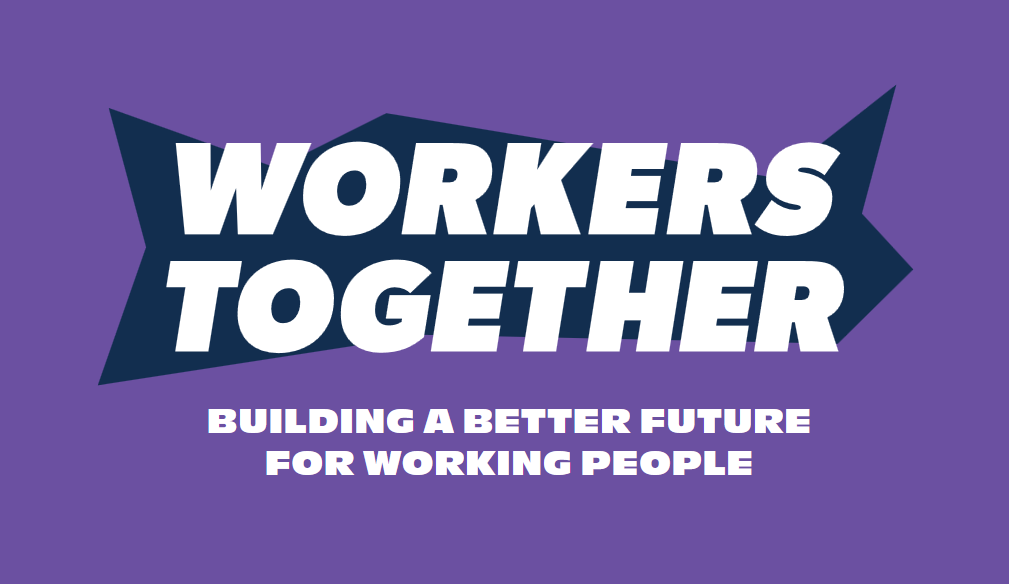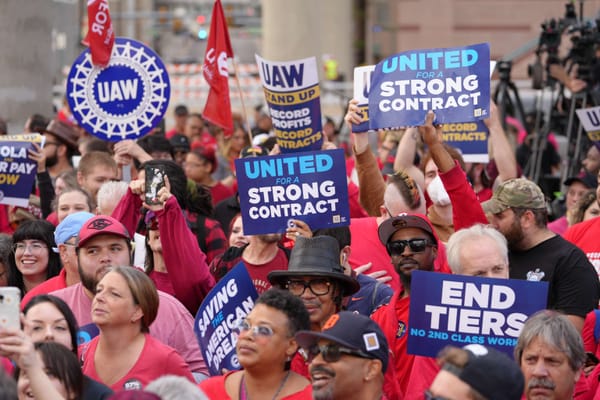
On November 26, the Justin Trudeau Liberals tabled Bill C-3, which will amend the Canada Labour Code to implement 10 days of paid sick leave. Finally, it seems paid sick days are on the agenda.
At the beginning of the pandemic, labour legislation across Canada did embarrassingly little to protect workers — particularly the non-unionized and those earning low wages — from loss of income in times of illness. In 2016, Canada’s General Social Survey found that only 42 per cent of workers had access to paid sick days.
Apart from British Columbia and the federal government’s recent paid sick leave amendments — neither of which have come into effect yet — access to paid sick days remains weak.
Across the 14 federal, provincial and territorial jurisdictions in Canada, only three guarantee workers any time off with pay when ill. Until Bill C-3 becomes law, the federal Canada Labour Code provides workers in the federally-regulated private sector (about 910,000 people) with three paid days of “personal leave,” which can be used as sick days or for other family caregiving purposes. Quebec legislates two sick days annually, while workers in Prince Edward Island can take one paid sick day off after they have completed five years of continuous employment. Canada therefore remains nearly alone among Organisation for Economic Cooperation and Development countries in providing no short-term paid sick leave to most workers.
New legislation in B.C. will guarantee workers five paid sick days beginning January 1 — a victory no doubt, but one that also falls short of the 10 days most experts recognize as the minimum to promote better public health.
It took 20 months of a global pandemic and an election for the federal government to finally introduce more expansive paid sick leave legislation. Because this is federal labour legislation — and the employment and labour of most workers is regulated at the provincial level — the new sick leave will only be available to a small subset of the workforce in industries such as air, rail, and interprovincial road transportation, banking, telecommunications, First Nations band administration, and a few other industries. However, the Liberals committed in their election platform to convene meetings with the provinces and territories to press for similar legislation across the country. Here’s hoping.
Outside of the emergency measures taken in Ontario and B.C. to implement three paid sick days during the pandemic, which were far too little and too late, and are about to expire, only B.C. has made any effort to pass permanent short-term paid sick leave. Workers in all other provinces and territories remain without legislated paid sick days.
Federal paid sick leave is thus undoubtedly a welcome development, even if it’s also nearly two years too late. The federal New Democratic Party says it’s happy to finally see a plan for paid sick days. The Canadian Federation of Independent Business is, predictably, upset about the “timing” of the legislation, though I can’t imagine a point in time when they’d like to see any law benefiting workers.
So far, however, the mechanics of the new paid sick leave plan have been relatively unremarked upon. To put it frankly, the government’s design of the sick leave policy is nothing short of goofy.
Here’s how it will work:
Employees in federally-regulated workplaces “earn” (we’ll get to this problem in a moment) up to 10 paid sick days after 90 days of continuous employment. Like most other leaves and entitlements under federal labour standards legislation, the new sick leave policy requires workers to complete a “continuous employment” qualifying period. These are typically 30 to 90 days. Across the provinces, comparable qualifying periods can be shorter or longer, depending on the leave or entitlement in question.
However, delaying eligibility for sick days undermines their public health purpose. Workers don’t decide when they get sick. As written, the legislation means that a new employee who happens to become ill in the first three months of employment will likely come to work sick and spread their illness to coworkers and the public. “Wait periods” are a concession to employers and ought to be done away with for most leaves and benefits, sick days especially.
Bill C-3 requires employers to pay employees their “regular wages” for each day of sick leave the latter uses. This much is good, as there’s no pay reduction for absences due to illness or other loopholes that might permit employers to withhold sick pay. Generally, according to federal and provincial employment standards legislation, “regular wages” means the average pay earned in a full workday.
There’s also no “waiting period” to receive sick pay, which is in part one of the primary advantages of mandating employer-paid sick leave. Accessing income replacement through federal programs like Employment Insurance is more cumbersome because of the application process and the requirement of a waiting period before benefits are dispensed (usually one week) in which a worker must go without income. Obviously, this is nonsensical if someone who is sick simply needs to take one or two days off. Because employers already process payroll for their staff, it is much simpler for them to pay out short-term sickness benefits.
The new bill stipulates that sick leave can’t be used in increments smaller than a full workday, but can be taken either as separate days or as a block of days. This isn’t a huge problem because we’re talking specifically about sick days, which are generally taken in full workdays. This stipulation does raise a deeper issue though. The federal government has chosen to keep the “personal leave” of three paid days for family responsibilities in place, while requiring that workers only use the new 10 paid days for sickness. Without delving into all the nuances, it would have been much better to combine both personal and sick leave together and allow workers the flexibility to use the accumulated days as they please, including in increments shorter than a workday. Other experts have recommended that sickness and caregiving benefits should, as a matter of principle and gender equity, be combined.
But here is where things really go off the rails. Under the new plan, employees in federally-regulated workplaces will earn one day of sick leave at the beginning of each month — up to a maximum of 10 — after completing the previous month of continuous employment.
In other words, on January 1 of each year, workers have zero accumulated paid sick days. On February 1, they will be entitled to one day, then two days on March 1, and so on. Someone needing to take a week off (five days) from work with illness will only be able to do so in June, whereas a worker needing to rest for two weeks won’t be entitled to do so with pay until November — provided of course that they haven’t previously used any of their accrued sick days. (Remember the two weeks of quarantine necessitated by potential exposure to COVID-19?)
This is a foolish way to design a sick leave policy, from both a public health and workers’ rights perspective. Denying the ability of a sick person to take sufficient time off in, say, March, puts us no further ahead than we were previously. There’s simply no good reason to incrementally award sick days, unless you think that the object of policy design is to outmaneuver conniving workers whose primary objective is to abuse paid sick leave.
The Liberals have also included a provision in the legislation that allows workers to “carry forward” unused sick days into the following year. This is helpful insofar as some workers will then begin the new year with available sick days. However, each day carried over from the previous year is subtracted from the number of days a worker can earn in the current year. In other words, one can never have more than 10 accumulated sick days “on the books.”
This basically creates a built-in incentive for workers to “use up” their sick days either at the end of the year when the full 10 are available, or to “save” half, carry them forward and then take them as a block mid-year when all 10 are again accessible. (Note: the legislation is unclear whether workers who carry forward unused sick days will begin accruing new ones immediately, or whether new sick days are only awarded after the days carried forward equal the number of days which would have been earned in the new calendar year).
All of this mess nicely illustrates a point Matt Bruenig at the Peoples’ Policy Project in the United States often makes: introducing complicated policy design features — the purpose of which is usually to make benefits less generous — ends up creating all kinds of pointless problems and perverse incentives. When policymakers begin from the premise that employers need to be “protected” from workers “mis-using” benefits, they end up overcomplicating and potentially eroding support for their policies among the very people who stand to benefit.
The simple solution to this problem in the case of paid sick leave would be to provide 10 paid sick days on January 1 of each year and trust that workers will use them as they need — as research suggests workers who already have access to paid sick days actually do.
Further, the sick leave plan allows employers to request a doctor’s note no later than 15 days after the employee returns to work. “Documentation” requirements disincentivize workers from using sick days when they truly need them, in the process undermining public health. Such requirements also often force workers to make unnecessary doctor or hospital visits in order to “document” that they felt sick. Again, policy drafted with workers’ interests in mind wouldn’t impose such ridiculous stipulations.
These significant shortcomings aside, winning paid sick leave federally is a start worth celebrating, and will hopefully begin the process of crafting similar provincial legislation across the country. The specifics of Bill C-3, however, do leave a lot to be desired. Against advice from public health experts, and all good sense, the Liberals have chosen to include needless complications and impediments in their draft legislation.
In policy terms, fixing this is simple: Paid sick leave should be available in full on the date of hire, full wage replacement should be provided and workers shouldn’t be compelled to produce medical “documentation.” The heavier lift is building the working-class power to make paid sick leave work for all.







